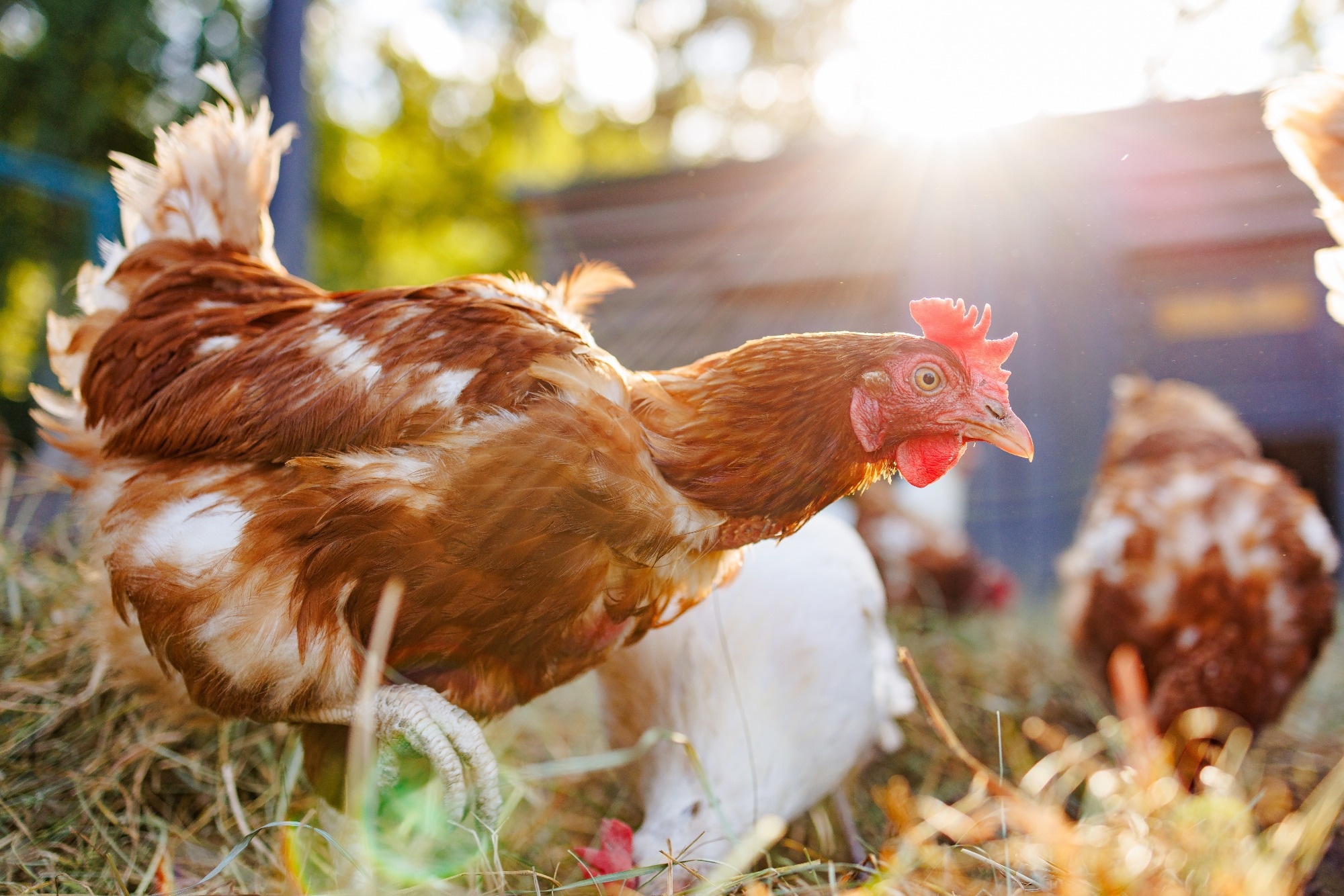Reviewed by Lauren HardakerNov 28 2025
Avian influenza viruses pose a specific risk to people, as they can multiply at temperatures exceeding a normal fever, which is a defense mechanism used by the body to halt viruses, according to new research conducted by Cambridge and Glasgow universities.
 Image credit: sergey kolesnikov/Shutterstock.com
Image credit: sergey kolesnikov/Shutterstock.com
The team pinpointed a gene that significantly influences a virus's temperature sensitivity in a study published in Science. This gene was transferred to human influenza viruses during the lethal pandemics of 1957 and 1968, and the resulting virus flourished.
Each year, human influenza viruses lead to millions of infections. Influenza A viruses are the most prevalent of these viruses, causing seasonal flu. They typically flourish in the upper respiratory tract at roughly 33 ºC, as opposed to the lower respiratory tract's 37 ºC deep within the lungs.
Without intervention, viruses replicate and disperse throughout the host, potentially inducing mild to severe disease. Fever, a bodily defense mechanism, elevates body temperature to up to 41 ºC. The mechanism by which fever inhibits viruses, and why certain viruses persist, was previously unclear.
Avian flu viruses, unlike human flu viruses, commonly flourish in the lower respiratory system. Within their natural hosts, such as gulls and ducks, the virus frequently infects the intestine, where temperatures range from 40 to 42 ºC.
Prior research using cell cultures revealed that avian flu viruses are more resistant to human fever temperatures. The current study employs in vivo models to determine the protective role of fever and its potential limitations in combating avian flu.
Researchers in Cambridge and Glasgow, modeled fever responses to flu infections in mice. They used a lab-modified human influenza virus, PR8, harmless to people, for this study.
Mice do not usually get fevers from influenza A viruses. However, the scientists replicated fever's impact by increasing the surrounding temperature, thus raising the mice's body temperature.
Elevating body temperature to feverish levels inhibits the replication of human flu viruses, but probably not avian flu viruses. A 2 °C temperature increase was enough to change a fatal human flu virus infection into a non-severe illness, demonstrating fever's protective effect.
The study further showed that the PB1 viral gene, which is vital for viral genome replication within cells, significantly affects temperature sensitivity. Viruses possessing an avian-like PB1 gene resisted fever-level temperatures, inducing acute sickness in mice. This is relevant, as human and avian influenza viruses can exchange genes during co-infection of a host, such as when both infect swine.
The ability of viruses to swap genes is a continued source of threat for emerging flu viruses. We’ve seen it happen before during previous pandemics, such as in 1957 and 1968, where a human virus swapped its PB1 gene with that from an avian strain. This may help explain why these pandemics caused serious illness in people.
Dr. Matt Turnbull, Study First Author, Medical Research Council Centre for Virus Research, University of Glasgow
Dr. Matt Turnbull adds, “It’s crucial that we monitor bird flu strains to help us prepare for potential outbreaks. Testing potential spillover viruses for how resistant they are likely to be to fever may help us identify more virulent strains.”
“Thankfully, humans do not tend to get infected by bird flu viruses very frequently, but we still see dozens of human cases a year. Bird flu fatality rates in humans have traditionally been worryingly high, such as in historic H5N1 infections that caused more than 40 % mortality,” notes Senior author Professor Sam Wilson.
Understanding what makes bird flu viruses cause serious illness in humans is crucial for surveillance and pandemic preparedness efforts. This is especially important because of the pandemic threat posed by avian H5N1 viruses.
Sam Wilson, Professor, Cambridge Institute of Therapeutic Immunology and Infectious Disease, University of Cambridge
The results could affect how infections are managed, but the researchers emphasize that further investigation is necessary before altering treatment protocols. Antipyretics like aspirin and ibuprofen are commonly used to treat fever. However, clinical data suggest that fever treatment may not always help patients and might even facilitate the spread of influenza A viruses in people.
This elegant study builds on the very simple observation that different animals have different body temperatures, and shows how this may impact the way that viruses replicate in new hosts as they cross species barriers. The authors show that replication of human-adapted influenza virus is attenuated when temperatures are increased, such as in a fever. But avian influenza viruses, whose natural hosts have higher body temperatures, are not controlled by the fever response when they cross into mammals.
Wendy Barclay, Professor and Chair, Medical Research Council (MRC) Infections and Immunity Board
Wendy Barclay notes, “They link their findings to one particular gene of the virus, called PB1, which is often carried over from birds when a new pandemic virus emerges. These findings have important implications for when and how to use drugs to control the fever that is associated with an influenza infection, and may also help us to understand why the disease from some influenza outbreaks is more severe."
Source:
Journal reference:
Turnbull, M. L., et al. (2025). Avian-origin influenza A viruses tolerate elevated pyrexic temperatures in mammals. Science. DOI:10.1126/science.adq4691. https://www.science.org/doi/10.1126/science.adq4691.